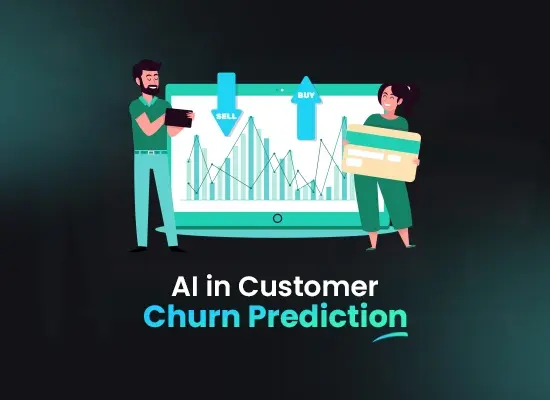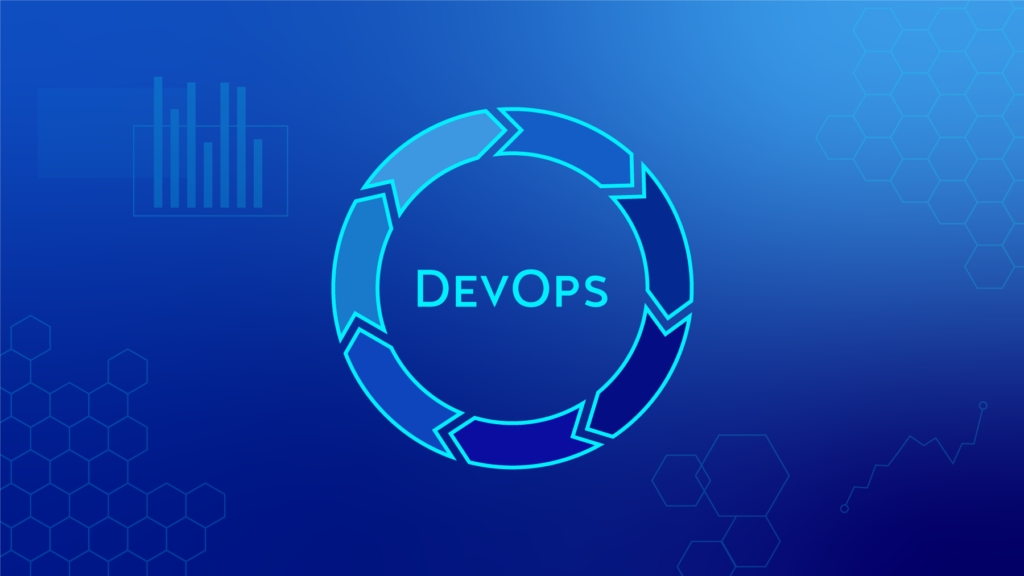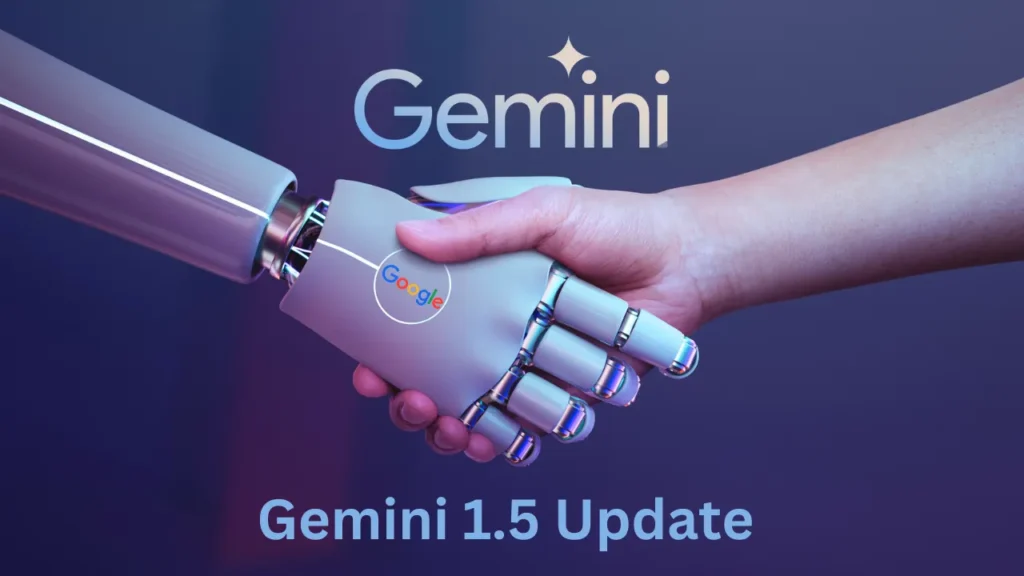AI in Customer Churn Prediction – Future Proofing Your Business

In today’s fiercely competitive business landscape, customer loyalty is more precious than ever. Yet, a constant threat lurks in customer churn. Predicting and preventing this exodus can be the difference between a thriving enterprise and a struggling one. This research delves into the fascinating realm of customer churn prediction, exploring how advanced analytics can illuminate the path towards customer retention and sustained business growth.
What is Customer Churn?
Customer churn, also known as customer attrition, refers to the loss of customers who stop using a company’s products or services over a specific period of time. It’s a critical metric for businesses of all sizes, as it directly impacts revenue and profitability.
Predicting customer churn before it happens is crucial for proactive measures. Businesses leverage various techniques, including AI-powered churn prediction, to identify customers at risk of churning. By analysing customer behaviour and historical data, these models can predict churn likelihood, enabling businesses to take preventive actions.
Preventing customer churn is often more cost-effective than acquiring new customers. Businesses can implement various strategies based on churn prediction insights, such as offering personalised discounts, improving customer service, or providing loyalty programmes.
Automated customer service can play a vital role in churn prevention. Chatbots and virtual assistants can address customer inquiries promptly, even outside of business hours, enhancing customer satisfaction and reducing churn.
By focusing on customer churn prediction and prevention, businesses can build stronger customer relationships, foster loyalty, and ultimately drive sustainable growth. Remember, understanding and addressing customer churn is crucial for long-term business success in today’s competitive landscape.
Seamless Collaboration | Cost-Efficient Solutions | Faster Time-to-Market

What is Customer Churn Prediction?
Customer churn prediction and prevention is a crucial aspect of any business strategy. It involves leveraging data and technology to identify customers at risk of leaving, also known as “churning.”
AI churn prediction utilises artificial intelligence (AI) algorithms to analyse vast amounts of customer data, including purchase history, interactions, and feedback. Through this analysis, the model can predict customer churn with a high degree of accuracy, allowing businesses to intervene proactively.
Imagine having an automated customer service system that can identify a customer displaying signs of potential churn. This system, powered by artificial intelligence, can trigger targeted interventions like personalized offers, loyalty incentives, or proactive support to address any concerns and encourage them to stay. By predicting customer churn, businesses can:
Reduce Customer Churn Rate:
By identifying at-risk customers, businesses can implement specific strategies to retain them, ultimately leading to a healthier customer base and increased revenue.
Optimise Marketing And Customer Service Efforts:
Resources can be focused on high-value customers and those at risk of leaving, ensuring efficient use of resources and maximising returns on investment.
Gain Valuable Customer Insights:
The data analytics for customer churn prediction also provides valuable insights into customer behaviour and preferences. This information can be used to improve product offerings, personalise marketing campaigns, and enhance the overall customer experience.
In essence, customer churn prediction empowers businesses to take a proactive approach to customer retention. By predicting and preventing churn, businesses can strengthen customer relationships, foster loyalty, and achieve sustainable growth.
Importance of Customer Churn Prediction:
In today’s competitive business landscape, retaining existing customers is crucial for sustainable growth. This is where customer churn prediction and prevention come into play. By leveraging AI-powered churn prediction, businesses can gain valuable insights into which customers are at risk of leaving, empowering them to take proactive measures and prevent churn.
Predicting customer churn allows businesses to identify early warning signs of dissatisfaction, enabling them to intervene before customers reach the point of cancellation. This proactive approach is significantly more effective and cost-efficient than trying to win back lost customers.
AI churn prediction utilises sophisticated algorithms to analyse vast amounts of customer data through data engineering services, uncovering patterns and behaviours associated with churn. These insights can then be used to personalise customer interactions, offer targeted promotions, and address potential issues before they escalate.
Imagine the power of automated customer service triggered by AI churn prediction. When a customer exhibits signs of potential churn, the system can automatically reach out with a personalised message, offering support or addressing specific concerns. This proactive engagement can significantly improve customer satisfaction and loyalty, ultimately reducing churn. By predicting customer churn, businesses can:
- Reduce customer acquisition costs: Retaining existing customers is significantly cheaper than acquiring new ones.
- Boost customer lifetime value: Satisfied customers are more likely to spend more over time, increasing their lifetime value.
- Improve resource allocation: By focusing resources on at-risk customers, businesses can optimise their customer retention efforts.
- Enhance brand reputation: Proactive customer service fosters positive customer experiences, strengthening brand reputation and loyalty.
In conclusion, customer churn prediction and prevention are no longer a luxury but a necessity for businesses of all sizes. By leveraging AI churn prediction, businesses can gain a competitive edge, build stronger customer relationships, and achieve sustainable growth.
Data Sources for Customer Churn Prediction:
Customer churn prediction and prevention rely heavily on the quality and comprehensiveness of the data fed into AI churn prediction models. Identifying the right data sources is crucial for accurately predicting customer churn and implementing effective automated customer service strategies. Here are some key data sources that power AI churn prediction:
Customer Interaction Data:
This includes details from various touchpoints, such as website visits, phone calls, email inquiries, and chat conversations. Analysing these interactions can reveal patterns in customer behaviour that might signal potential churn.
Transactional Data:
Purchase history, including frequency, amount, and types of products or services purchased, offers valuable insights into customer engagement and spending habits. Deviations from established patterns can be potential indicators of churn risk.
Customer Account Data:
Information like demographics, location, account status, and subscription details can help identify segments of customers more susceptible to churn based on specific characteristics.
Customer Feedback Data:
Surveys, reviews, and social media sentiment analysis can reveal underlying customer concerns and dissatisfaction, which can be early signs of potential churn.
Engagement & Usage Data:
Monitoring how customers interact with your product or service, including feature usage, login frequency, and content engagement, can provide valuable insights into their level of satisfaction and potential churn risk.
By leveraging a combination of these data sources, AI churn prediction models can learn complex patterns and identify customers at risk of churning. This allows businesses to take proactive measures like automated customer service interventions, personalised offers, and targeted communication to address concerns, improve the customer experience, and ultimately prevent customer churn.
It’s important to remember that the effectiveness of AI churn prediction hinges on the quality and relevance of the data used. Businesses should prioritise data accuracy, completeness, and ethical collection practices to ensure their models generate reliable insights and ultimately lead to successful customer churn prevention strategies.
Data Preprocessing for Automated Customer Service:
In the fiercely competitive world of business, retaining customers is paramount. This is where customer churn prediction and prevention come into play. By leveraging the power of AI churn prediction, businesses can identify customers at risk of churning, allowing them to implement proactive measures and retain valuable relationships.
However, the success of AI churn prediction hinges on the quality of the data used to train the models. This is where data preprocessing steps in. It’s the crucial first step in preparing your data for predicting customer churn.
Data preprocessing involves a series of techniques to clean, transform, and format your data, ensuring it’s suitable for the AI churn prediction model. Think of it as meticulously preparing the ingredients before cooking a delicious meal. Without proper data preprocessing, your AI churn prediction model may be fed inaccurate or incomplete information, leading to unreliable and misleading results. Through data preprocessing, you can:
Handle Missing Values:
Missing data points are a common challenge. Preprocessing techniques like imputation or deletion can address these missing values and ensure your model receives complete information for accurate customer churn prediction.
Encode Categorical Variables:
Many datasets contain categorical variables, like customer demographics or product categories. Preprocessing techniques like one-hot encoding transform these categories into numerical values that AI churn prediction models can understand and utilise effectively.
Normalise Or Scale Numerical Features:
Different features in your data may have varying scales. Preprocessing techniques like normalisation or scaling ensure all features are on a similar scale, preventing any single feature from dominating the AI churn prediction model’s learning process.
By investing time and effort in data preprocessing, you lay the foundation for accurate AI churn prediction. This empowers you to identify customers at risk of churning, personalise automated customer service interactions, and ultimately retain valuable customers, boosting your business success.
Feature Selection and Engineering to Predict Customer Churn:
In today’s competitive landscape, customer churn prediction and prevention are crucial for businesses to thrive. Here’s where feature selection and engineering come into play. These techniques play a vital role in building robust models for predicting customer churn.

Extracting the Right Information:
Feature selection involves identifying the most relevant and informative data points (features) from the vast amount of customer data available. This helps to focus the model on the factors that truly predict customer churn, leading to more accurate predictions and automated customer service interventions.
Crafting Powerful Features:
Feature engineering goes beyond simple selection. It involves transforming existing features into new ones that are more predictive of customer churn. This can involve combining features, creating ratios, or deriving new insights from existing data. By crafting powerful features, we can significantly improve the performance of our AI churn prediction models.
Building a Strong Foundation:
By carefully selecting and engineering features, we build a strong foundation for our AI churn prediction models. These models can then identify customers at risk of churning, allowing businesses to take proactive steps. This can include personalised offers, improved customer service interactions, or loyalty programs, ultimately leading to customer churn prevention and increased customer satisfaction.
The Benefits are Clear:
Investing in feature selection and engineering pays off in the long run. It allows businesses to build more accurate AI churn prediction models, identify at-risk customers earlier, and implement automated customer service strategies to retain valuable customers. This translates to increased customer lifetime value, reduced customer acquisition costs, and a competitive edge in the market.
Traditional Methods vs Machine Learning Approaches in Churn Prediction:
Understanding customer churn, the act of losing customers, is crucial for businesses to retain their customer base and maximise profits. Two main approaches exist for predicting churn: traditional methods and machine learning.
Traditional methods, such as RFM analysis (scoring customers based on Recency, Frequency, and Monetary value) and survival analysis (modeling the probability of a customer leaving over time), rely on manual feature selection and rule-based models. While these methods can be effective, they may struggle to capture complex relationships and hidden patterns in data.
Machine learning, on the other hand, leverages algorithms that learn from historical data to identify factors influencing churn. These algorithms, like decision trees or neural networks, can automatically extract complex features from various data sources, including customer demographics, purchase history, and interactions. This allows them to build more accurate and adaptable churn prediction models.
While both approaches have their merits, machine learning often outperforms traditional methods due to its ability to handle large datasets, identify complex patterns, and adapt to changing customer behaviour. This makes it a powerful tool for businesses to proactively identify customers at risk of churn and take steps to retain them.
Popular Machine Learning Algorithms to Predict Customer Churn:
Customer churn, the loss of customers over time, is a major concern for businesses. To combat this, companies are increasingly turning to machine learning operations to predict churn and take proactive measures to retain valuable customers. Here’s a glimpse into some popular algorithms used for this purpose:
Logistic Regression:
This classic algorithm is a good starting point, providing a straightforward way to analyse the relationship between various factors and customer churn. It’s easily interpretable, allowing businesses to understand which factors most significantly influence churn.
Decision Trees and Random Forests:
These tree-based algorithms create branching structures that classify customers based on their characteristics. They are powerful for handling complex, non-linear relationships and identifying key features driving churn.
Gradient Boosting Techniques (XGBoost, LightGBM):
These ensemble methods combine multiple weaker models into a single, more robust predictor. They excel at high accuracy and can handle large datasets efficiently, making them a popular choice for complex churn prediction tasks.
Neural Networks:
These powerful models, inspired by the human brain, can learn intricate patterns from data. While neural networks often require significant computational resources and data, they can be highly effective for churn prediction, especially when dealing with large and complex datasets.
Choosing the best algorithm depends on factors like dataset size, complexity, and the desired level of interpretability. By understanding these popular options, businesses can make informed decisions to leverage machine learning effectively in their fight against customer churn.
Model Evaluation Metrics to Predict Customer Churn:
When building a model to predict customer churn (when a customer stops using your service), you need a way to measure its success. Here are some key metrics that act like your personal scorecard:
- Accuracy: This reflects how often your model correctly predicts churn, a good starting point, but not the whole story for imbalanced data (mostly non-churners).
- Precision: This tells you how many customers flagged for churn actually churned. High precision means you’re catching true churners, but you might miss some.
- Recall: This shows how many actual churners your model identified. High recall means you’re not missing many churners, but might flag some who won’t churn.
- F1-Score: This combines precision and recall, giving a balanced view of how well you’re classifying churners.
- AUC-ROC: This metric considers the probability assigned by your model to churners and non-churners. A higher AUC-ROC indicates a better ability to distinguish between the two groups.
By analysing these metrics, you can understand your model’s strengths and weaknesses, allowing you to refine it and ultimately save valuable customers.
Challenges and Considerations for Automated Customer Service:
Challenges in Automated Customer Service:
- Limited Understanding: Automated systems can struggle to understand complex queries, nuances of language, or emotional intent, leading to frustration and miscommunication.
- Lack of Empathy: Automated interactions often lack the human touch, making it difficult to build rapport and address customer concerns with empathy and understanding.
- Technical Issues: Glitches, outages, or misinterpretations can disrupt service and further aggravate customers facing issues.
Considerations for Implementing Automated Customer Service:
- Identify Suitable Tasks: Focus automation on tasks that are repetitive, rule-based, and well-defined, allowing human agents to handle complex or sensitive situations.
- Offer Seamless Transition: Ensure smooth handoff between automated systems and human agents, providing clear options for escalation and avoiding customer frustration.
- Prioritise User Experience: Design automated interactions to be user-friendly, transparent, and efficient, addressing customer needs effectively.
- Monitor and Improve: Continuously monitor performance, gather feedback, and refine automation to ensure it remains effective and doesn’t negatively impact customer satisfaction.
Seamless Collaboration | Cost-Efficient Solutions | Faster Time-to-Market

Business Applications of Churn Prediction:
Churn prediction, the ability to anticipate customer defection, offers numerous advantages for businesses across various sectors. Let’s delve into some key applications:
Reduced Customer Churn:
By pinpointing customers at risk of churning, businesses can proactively intervene with targeted offers, improved service, or personalised solutions. This proactive approach helps retain valuable customers and minimise revenue loss.
Improved Customer Experience:
Churn prediction can identify areas where customer experience falls short. Businesses can analyse customer behaviour associated with churn and use these insights to address pain points, leading to a more satisfying customer journey and fostering loyalty.
Optimised Marketing & Sales Efforts:
Churn prediction models help identify high-value customers and those most likely to convert. Businesses can then tailor marketing and sales campaigns, focusing resources on attracting and retaining the most profitable customers.
Product & Service Development:
Analysing churn data can reveal reasons behind customer dissatisfaction. This information can be used to refine existing products and services or develop new ones that better meet customer needs, ultimately increasing customer satisfaction and reducing churn.
Enhanced Resource Allocation:
Churn prediction allows businesses to anticipate future customer needs and allocate resources accordingly. This could involve staffing adjustments, inventory management, or investing in specific customer retention strategies.
Overall, churn prediction empowers businesses to make informed decisions, optimise operations, and ultimately achieve sustainable growth by retaining valuable customers.
Implementing Churn Prediction Models in Real-world Scenarios:
Identifying At-Risk customers:
Churn prediction models leverage historical data on customer behaviour and demographics. By analysing this data, these models identify individuals displaying patterns associated with a high likelihood of leaving a service or subscription.
Proactive intervention:
Early identification of potential churners empowers businesses to take action before customers leave. This allows for targeted interventions, such as personalised communication, special offers, or addressing specific concerns, aimed at retaining valuable customers.
Data-Driven Decision Making:
Churn prediction models move businesses beyond guesswork in customer retention strategies. By providing data-driven insights into customer behaviour, businesses can make informed decisions about resource allocation, marketing campaigns, and product development, ultimately improving overall customer experience and loyalty.
Continuous Improvement:
The effectiveness of churn prediction models relies on continuous monitoring and adaptation. As customer behaviour and market trends evolve, models need to be updated with fresh data and potentially re-trained to maintain their accuracy and effectiveness in real-world scenarios.
Conclusion:
Our findings indicate the effectiveness of churn prediction in predicting customer churn. However, for sustained success, we recommend:
- Continuous monitoring and improvement of models to adapt to evolving customer behavior.
- Segmentation of customer data to tailor retention efforts for different risk groups.
- Implementing targeted interventions based on churn drivers identified by the model.
- Regularly evaluating the impact of churn reduction strategies to ensure effectiveness.
By following these recommendations, businesses can leverage churn prediction effectively and build long-lasting customer relationships.

Author Bio
Syed Ali Hasan Shah, a content writer at Kodexo Labs with knowledge of data science, cloud computing, AI, machine learning, and cyber security. In an effort to increase awareness of AI’s potential, his engrossing and educational content clarifies technical challenges for a variety of audiences, especially business owners.







